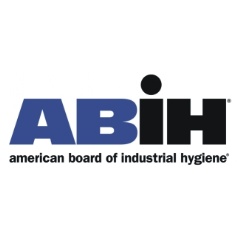NIOSH Posts Silicosis Update Highlighting the Need for Continued Worker Protection
The American Board of Industrial Hygiene® (ABIH®) reminds workers and industry of the need to address workplace exposure risks to respirable hazards.
Certified Industrial Hygienists are uniquely qualified to help prevent worker exposure to this and other respirable hazards due to their training and experience in air sampling, engineering controls, work environments, industrial processes and risk analysis.
In June, the National Institute for Occupational Safety and Health (NIOSH) published a Silicosis Update. It discusses new recently released data about silicosis and how a wide range of workers in numerous industries are exposed to silica-containing dusts.
The new data shows that the annual number of silicosis deaths declined 40% from 185 in 1999 to 111 in 2013, but the decline appears to have leveled off during 2010–2013. The NIOSH update also states that in 2010, for example, silicosis was a reportable condition in only 25 states. State health departments are encouraged to help strengthen silicosis prevention efforts by identifying silicosis cases through review of state morbidity and mortality data, and investigating the circumstances surrounding silicosis cases.
“While silicosis mortality in the U.S. has declined over time, the continuing occurrence of silicosis deaths in young adults and reports of new occupations and tasks that place workers at risk for silicosis underscore the need for strengthening efforts to limit workplace exposure to respirable crystalline silica.” – NIOSH Silicosis Update
Crystalline silica is a component of soil, sand, granite and other minerals. Quartz, cristobalite and tridymite are all forms of crystalline silica. Each form may become respirable size particles when workers chip, cut, drill or grind objects that contain the material.
“Exposure to respirable silica in the work environment can be deadly, but prevention of silicosis is entirely possible,” said Nicole Greeson, CIH® and Chair of ABIH®. “Certified Industrial Hygienists are uniquely qualified to help prevent worker exposure to this and other respirable hazards due to their training and experience in air sampling, engineering controls, work environments, industrial processes and risk analysis. These and other core competencies of the CIH® program can be instrumental in minimizing exposure risks and potential health issues.”
To learn more about the American Board of Industrial Hygiene®, Certified Industrial Hygienist® credential or to locate a CIH® to perform industrial hygiene services, please visit www.ABIH.org, email abih@ABIH.org or call (517) 321-2638.
About the American Board of Industrial Hygiene ®
Since 1960, ABIH®, a not-for-profit corporation, has been the world’s largest, premier organization for certifying professionals in the practice of industrial hygiene. ABIH® is responsible for ensuring high-quality certification including education, experience, examination, certification maintenance and ethics enforcement. Currently, more than 6800 people are certified to use the CIH® designation.
( Press Release Image: https://photos.webwire.com/prmedia/12710/200028/200028-1.jpg )
WebWireID200028
- Contact Information
- Paul Cochrane
- President
- Cochrane & Associates, LLC
- Contact via E-mail
This news content may be integrated into any legitimate news gathering and publishing effort. Linking is permitted.
News Release Distribution and Press Release Distribution Services Provided by WebWire.
